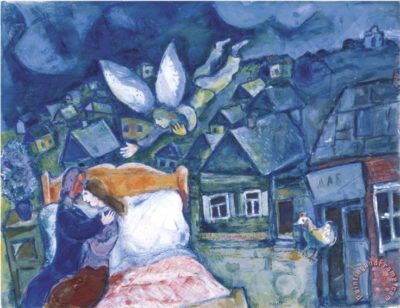Dreaming is an art. It is the art by which nature attempts to re-establish wholeness between your conscious and unconscious minds. Dreams do not intend to be deceptive or even elusive. They are imaginal messengers from your innermost psyche that speak in the only language they know; symbol and metaphor. Taking the time to understand the language of dreams can bring balance to your personality, spark instinctual creativity and expand your view of the world. First, though, it’s necessary to develop your own perspective towards dream images. Let’s look at three theories of dreams: Jungian, Gestalt and the Australian Aboriginal, to help you start this process.
Carl Jung believed that below the surface of our psyche their lies both a personal and a collective unconscious. The personal unconscious is, in Jung’s words: “everything you know but are not at this moment thinking about.” The collective unconscious lies deeper down and is passed along to every member of a species. You could also think of the collective unconscious as genetic, or racial memory that is inherited through the process of evolution. Jung explains that the psyche regulates itself by maintaining an equilibrium between these different layers of consciousness. He also proposed two basic approaches to working with dream material; the subjective and the objective. The objective approach takes every image in a dream at face value. If you dream of your mother that image refers to your mother. The subjective approach is less literal and treats each character in a dream as an aspect of the dreamer’s personality.
The Gestalt theory of dream interpretation maintains that each part of a dream becomes comprehensible only in relation to the whole. Both animate and inanimate objects are considered parts of the dreamer’s psyche, from this vantage point. For example, if you dream of a bridge this may represent an aspect of yourself that is attempting to make connections between two separate elements within your self. The goal of this approach is to accept and re-integrate areas that may have been repressed or ignored. Role-playing is often used as a technique in Gestalt dreamwork. The dreamer can engage any image from their dream in a dialogue. This enables the dreamer to bring fragments of themselves into communication with eachother and resolve unfinished issues.
Australian Aborigines believe that the world was created by ancestral totemic spirits during a sacred epoch called Dreamtime. During the Dreamtime the designs for life were set in place. According to their views, each person dwells eternally in the Dreaming. A person’s spirit enters life from the Dreaming at birth and returns to the Dreaming at their death. Australian Aborigines also view all of life as an interconnected system that can be traced back to the beginning. They experience the Dreaming as “all at once time” rather that “one thing after another time.” This means that the past, present and future co-exist without separation. Dreams confirm this seamless reality for the Australian Aborigines because time and space lose their relevance. Exploring indigenous beliefs about dreams and reality can be an effective way to challenge and refine your own worldview.
Once you have a perspective from which to understand your dreams it can be very powerful to express them artistically. To take something intangible and give it form. This also serves the purpose of honoring the dream itself and signals to your unconscious psyche that you are listening. Dreams can be drawn, painted, acted out, turned into stories or even sung. Small gestures such as these will strengthen the relationship between your conscious and unconscious. Your conscious mind then sprouts wider roots into the depths of your psyche. This, in turn, sets a fertile foundation for sustained personality growth.

